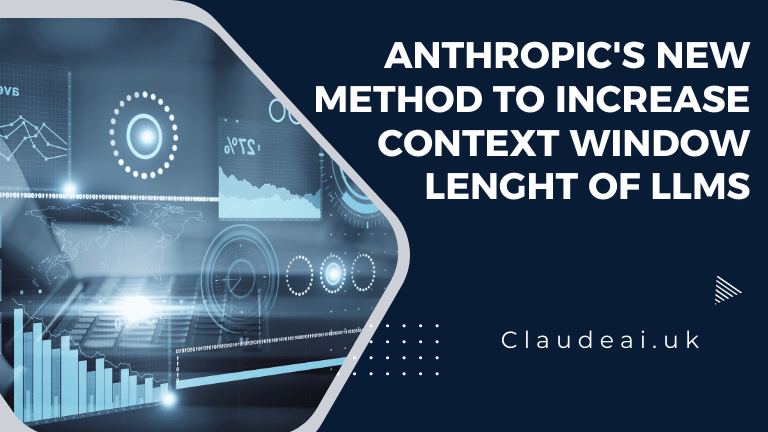Anthropic‘s New Method to Increase Context Window Lenght of LLMs! Recent years have seen rapid advances in natural language processing, thanks in large part to the rise of giant language models like OpenAI’s GPT-3. These foundation models have leveraged massive datasets and computational power to achieve impressive performance on a diverse range of language tasks. However, most have relatively short context windows—the number of tokens they can take into account when making predictions or inferences. Anthropic, an AI safety startup, is now poised to shake up the field with a novel method to significantly extend the usable context length for the next generation of LLMs.
Diving Deep into Model Architecture
At the core of Anthropic’s approach is a technique focused on model architecture itself. While brute-force context window extension results in a quadratic blow up in compute and memory costs, Anthropic employs sparse attention mechanisms to maintain efficiency while still allowing models to access thousands of tokens of previous context. This allows language models to deeply comprehend document-level discourse and dialog without losing the ability to reason about fine-grained linguistic structure.
Steady Progress Towards More Capable LLMs
The implications of this architectural breakthrough are immense. As models take into account more context, they grow more capable of tackling complex, multi-step tasks requiring long-term reasoning or planning. Anthropic’s Claude AI engineering team has already constructed a model with over 3,000 tokens of context on a single GPU-equipped server. Ongoing work is rapidly iterating towards support for 10,000+ token windows using efficient attention schemes.
Better Alignment through Understanding Instructions
There are also benefits for AI alignment and safety. Models with wider context have an easier time following complex instructions precisely as stated. This reduces incentivizes for misalignment stemming from models falling back on brittle heuristics or guessing incorrectly about intended behavior outside a limited context. More complete context comprehension leads to more robust model performance.
Pushing Past Perceived Limits of LLMs
For years, researchers argued extending context length for LLMs would be constrained by engineering challenges around computing hardware and model training. Anthropic is on track to conclusively push past these perceived limits using their innovative approach. Rather than brute force, they employ structured sparsity to capture what truly matters for learning and inference. The result is unlocking profound amounts of usable history representations while maintaining tractability.
Onwards and Upwards for LLM Capabilities
Anthropic’s Context Window Extension method is still in the early phases. But already it promises to expand conceptions of what may be possible with LLMs in practice. Momentum continues building towards models that can tackle tasks across documents, multi-party conversations, complex problem solving scenarios and more. It sets the stage for AI systems with comprehension and reasoning capabilities far beyond the current state-of-the-art. For the teams developing the next generation of LLMs, this new technique shatters assumptions about context limitations. It’s now clear much wider windows are within reach, opening new frontiers in advanced language intelligence.


